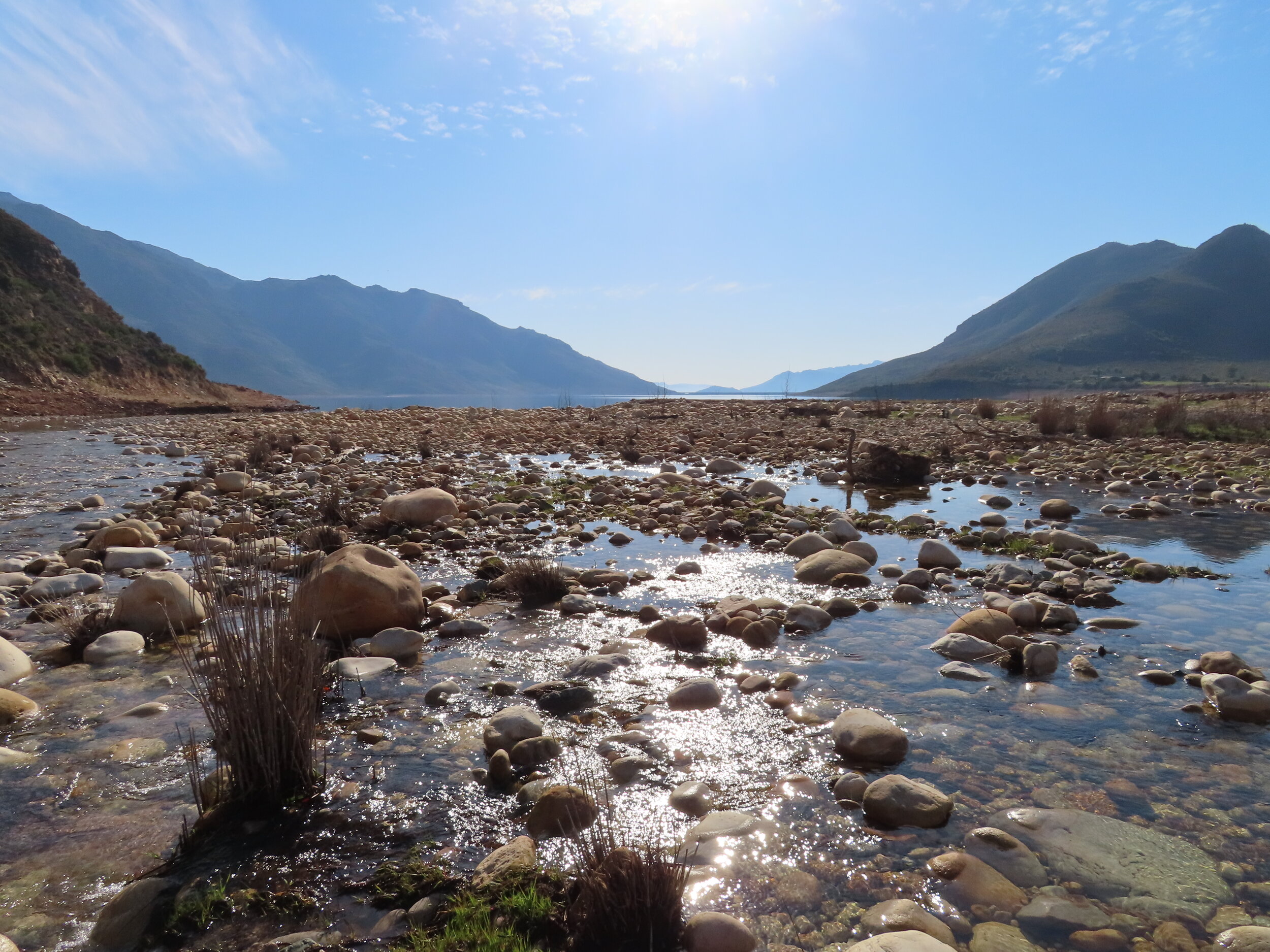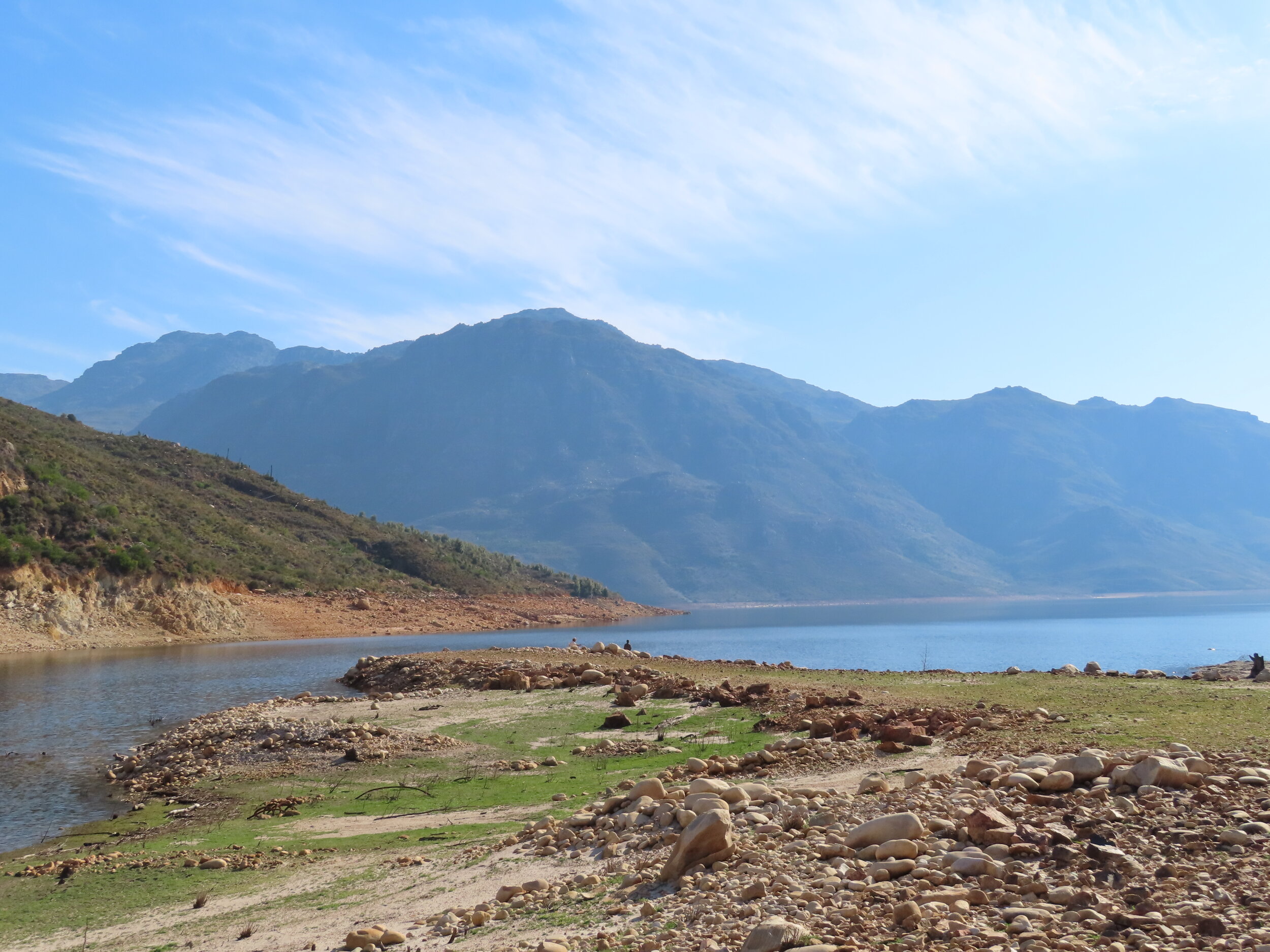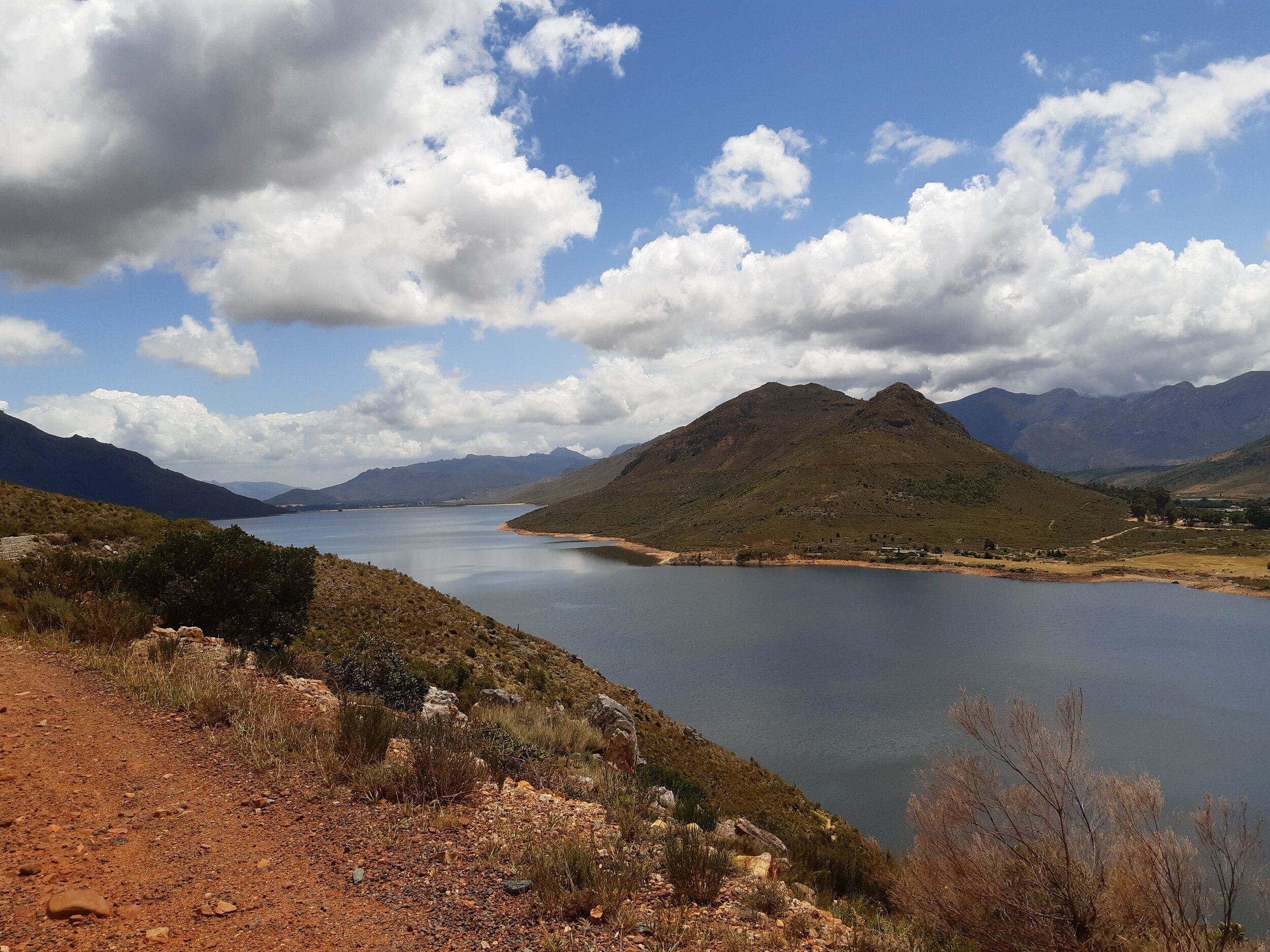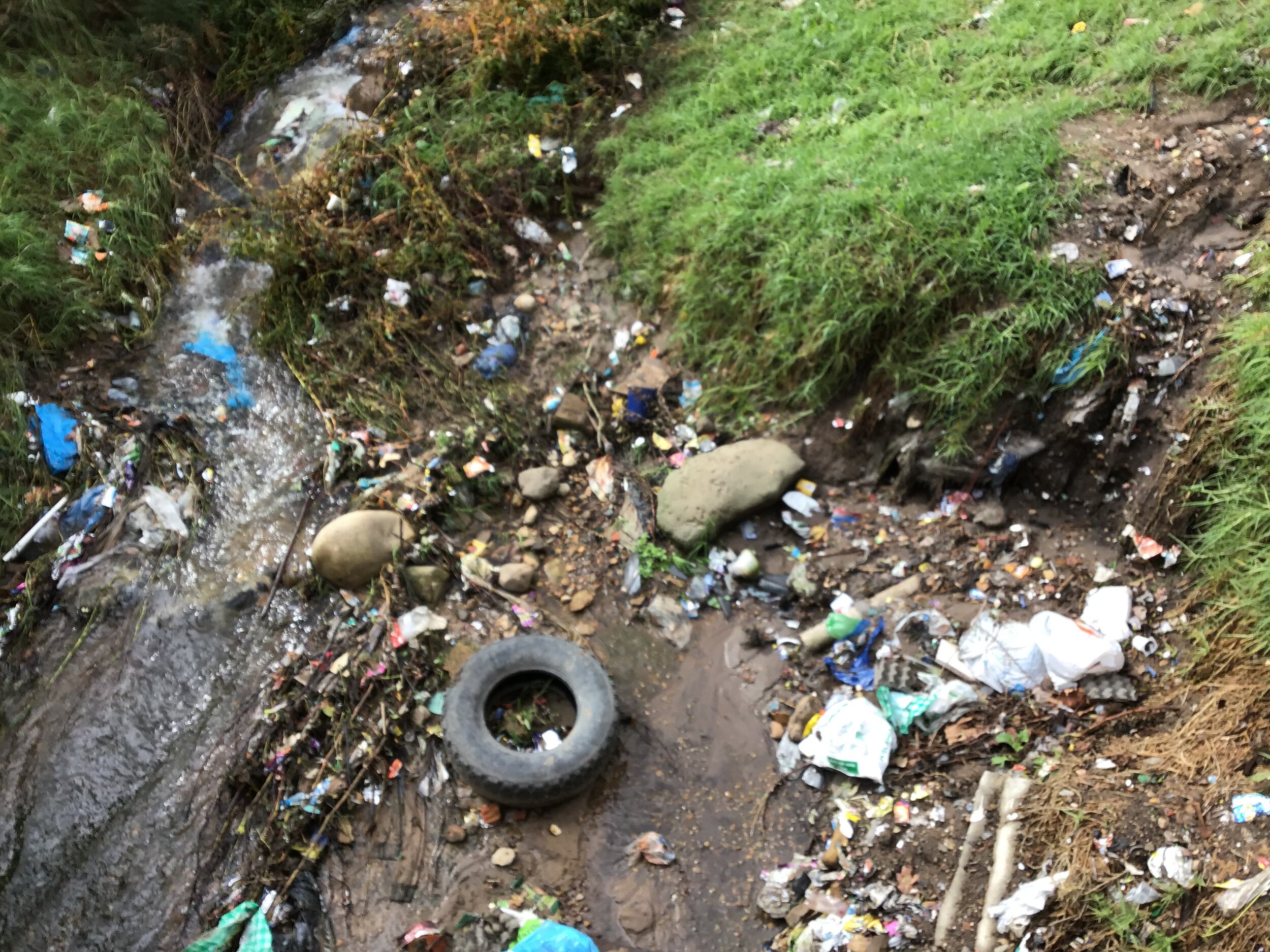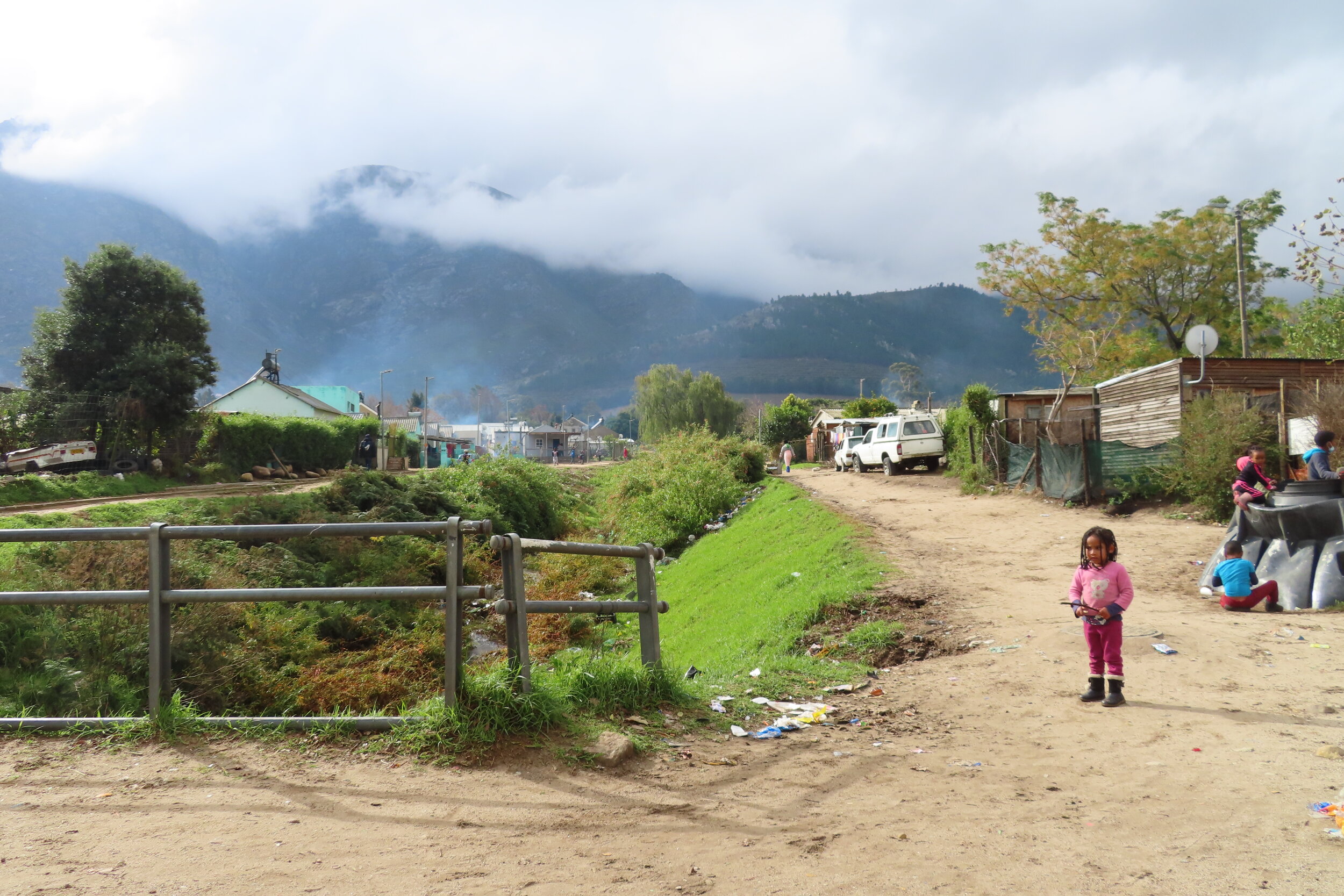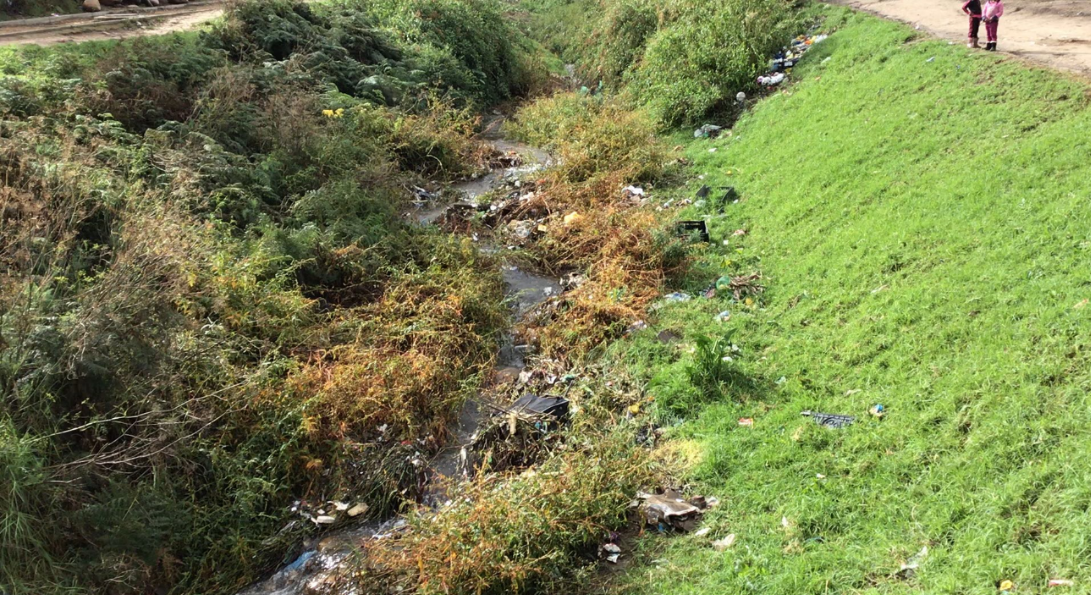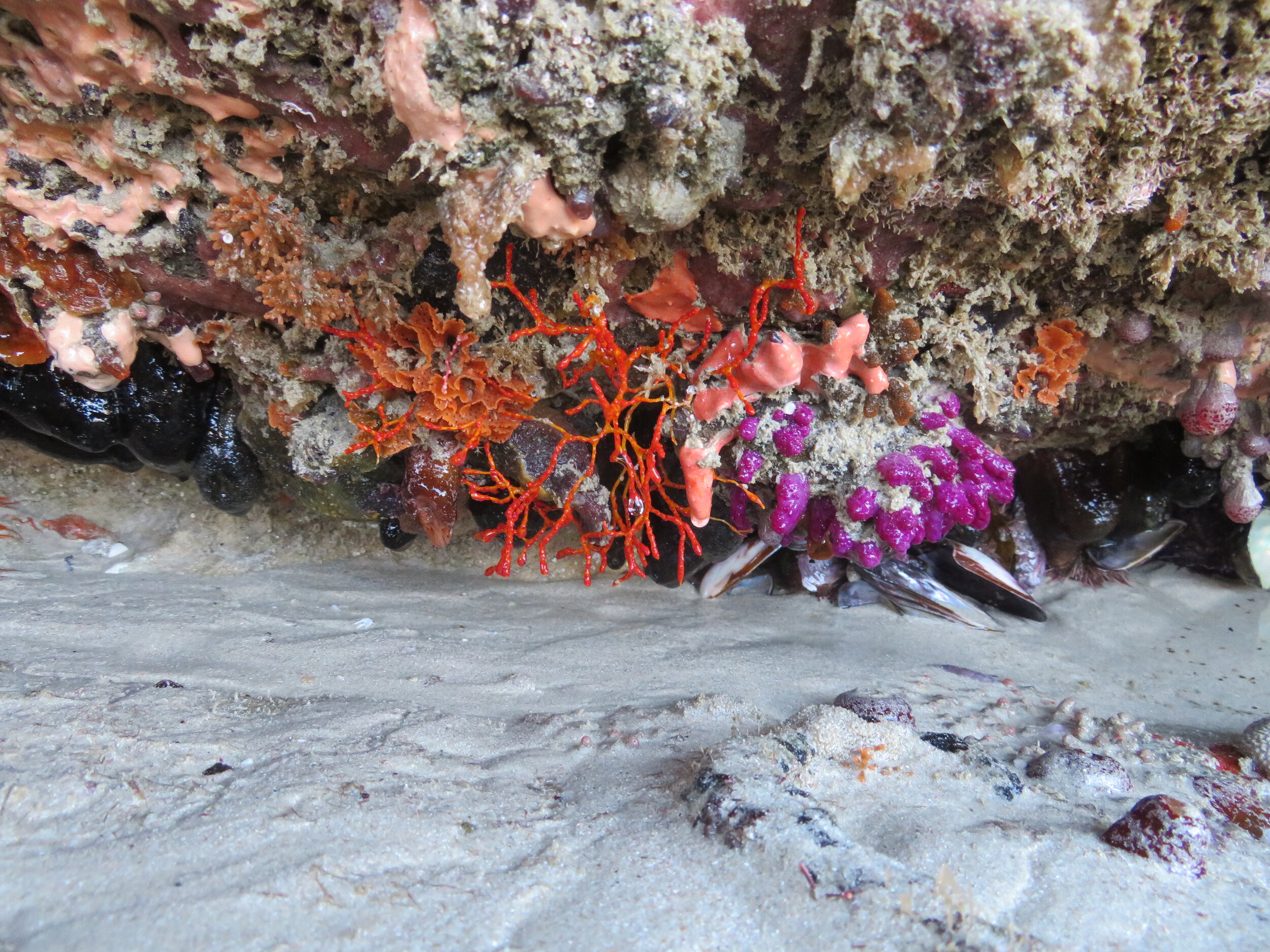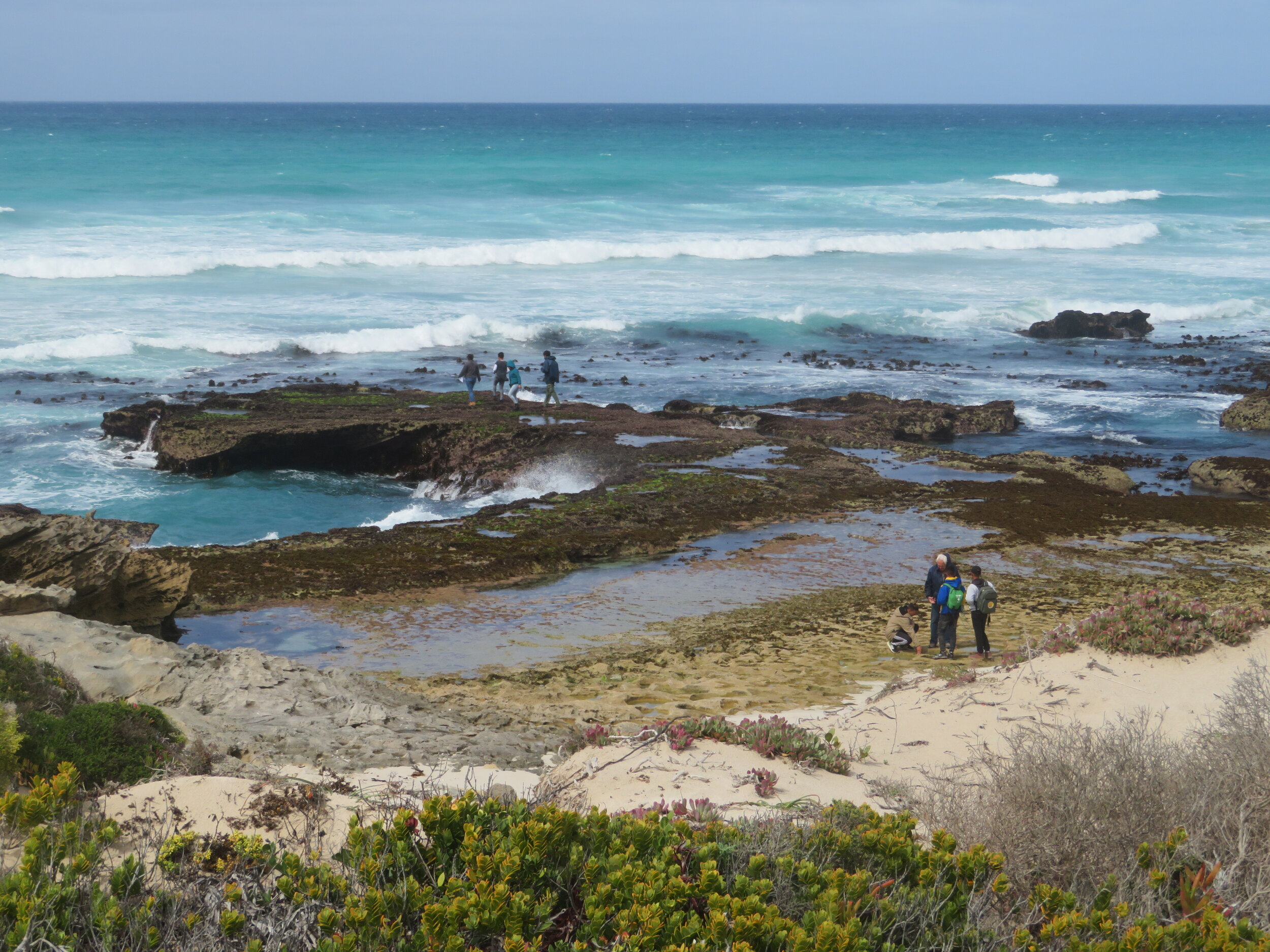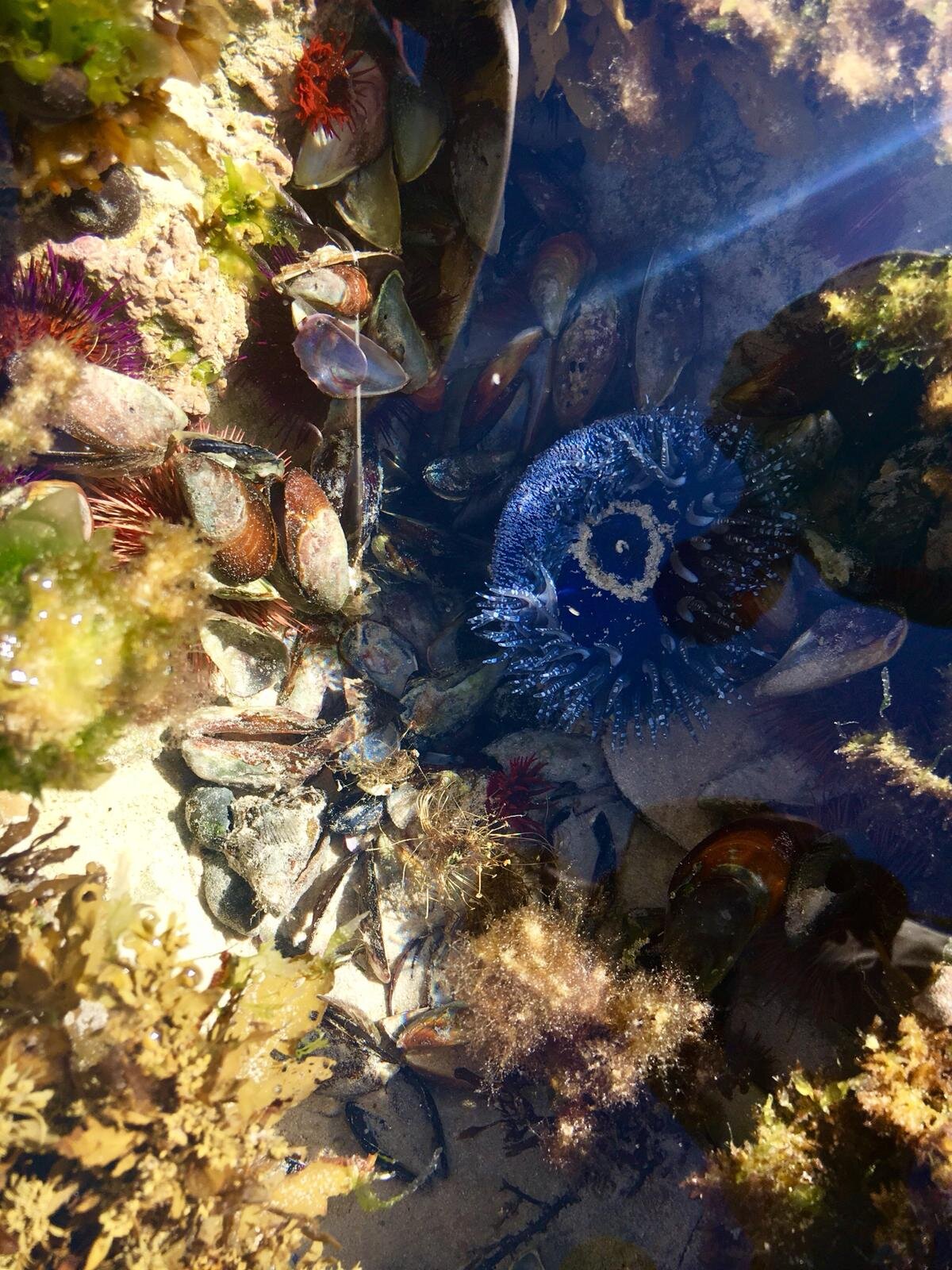The Ocean Starts Here
The Cape Winelands Biosphere Reserve, is the source of seven rivers, including the Berg and the Breede. They are not only the life blood to cities, homes, agriculture, and industry but are an integral part of the habitat for the incredible biodiversity along their path to the ocean. The Hottentots Holland Mountain range forms the watershed, with the Berg River flowing into the Atlantic and the Breede flowing into the Indian Ocean.
Unfortunately, they are also the arteries delivering the plastics and other detrimental elements into the Oceans. They are connected to, and interact with the ocean many kilometers inland, so one cannot address the pollution problem only within the oceans and on the beaches.
Arianna Olivelli and her team have been measuring plastic, of all sizes, on South African beaches for over 25 years, especially related to the small fragments found in seabirds.
“The country is the 11th worst offender in terms of land- based litter entering the sea. It is important that we understand the sources and movement of plastic in marine systems if we are to devise effective policies to reduce the amounts entering the sea”.
Britta Denise Hardesty, and Chris Wilcox from SCIRO, research has found that 90 percent of marine debris remains with the littoral zone, close to the shoreline. Plastic making up over 50% of it.
It becomes obvious that the most effective efforts to mitigate Ocean pollution should be land based. Attacking the causes at source, even before it enters the rivers. According to WWF, South Africans use about 30kg to 50kg. (about a third of the American average). With a population of 57 million, it is a staggering 2.8 million tons a year. 70,000 interlink trucks full, that is 191 40-ton trucks a day.
Dr Kevin Winter, while paddling down the Black River, says that they were “flabbergasted” by what they saw during their paddle. “We had to dodge all kinds of things – dead dogs, dead cats, crazy stuff… people won’t believe what ends up in those rivers and canals,” he says.
“When it goes out to sea, we think we’ve lost it altogether, but we need to think again. If we pollute our oceans, how can we expect to run desalination plants? How can we be expected to create drinking water from polluted water? It’s insane,” he cautions.
How are we as South Africans, and as Biosphere Reserves going to reduce this scourge?
If anyone has a practical and implementable solution, please contact at info@capewinelandsbiosphere.co.za
And we will do our best to make it happen.
The Berg River Dam. The first dam designed to maintain the ecological integrity of the surrounding landscape and rivers
Stiebeuel River after heavy rain, running through the middle of Groendal Franschhoek
A beautiful Marine-ecosystem in the Indian Ocean by De Hoop Nature Reserve

